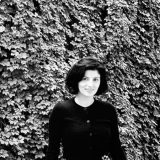Born in Timișoara in 1990, Mihai Toth graduated from the Faculty of Arts and Design in Timișoara, where he is currently pursuing a PhD in Visual Arts. In 2013, he co-founded the Baraka Artist Cultural Association, an alternative research space in the field of visual arts that promotes the development of independent but also collaborative artistic projects. He was invited to participate in numerous group exhibitions.
The most recent exhibitions include: “If A Story Is Present” – group exhibition – ArtEncounters Foundation, Timișoara; “Meeting Point In Suspended Fields” – solo exhibition – Fantom Gallery, Berlin; “Evadarea din Labirint”-group exhibition-Mansarda Gallery (Faculty of Arts and Design Timisoara); “Ocheanul întors. Ateliere de artiști” – group exhibition – Reperaj Gallery, Oradea; projects with the Baraka Artist group: “Mr. Bonze” – ETAJ artist run space, Bucharest; “Young Blood. Art of your time” – ArtSafari 2019, Bucharest; “Sanguinaccio dolce group show” – Atelier 35, Bucharest. He lives and works in Timisoara.
You graduated from the University of Arts in Timișoara, after high school with a health profile and a degree in construction – cadaster specialization. When did you feel that you were meant to be an artist?
Looking back at this convoluted route, I am deeply convinced that all the areas I have been part of and all the people I have interacted with in certain situations have left a certain mark and contributed to strengthening the perception, the way of functioning, and the attitude on which manifest it both in art and in life. I do not resonate so much with the idea of an artist, but rather I rely on the notion of artistic practice. Viewed from this angle, the coagulation of my practice has formed organically and continues to take on new nuances along the way. The fact that I tasted several areas of activity allowed me to articulate an activity with an interdisciplinary and even transdisciplinary character that I manifest in the area of art. Therefore, I could not mark the exact moment of my decision in building an artistic path, but things were accelerated in this direction ten years ago when I applied for admission to the Faculty of Arts and Design in Timișoara.
To what extent did your academic experience help you in your artistic evolution and especially in the development of your style?
I could answer this question by drawing a parallel to the motivation behind my admission to the Faculty of Arts and Design in Timișoara, namely the desire for dialogue and communication with the artistic environment. Coming from a register in which I was formed as a person, but without having direct contact with the cultural-artistic area, I needed to research this environment through direct interaction with the artistic community that Timișoara had in 2013. The same discourse also impelled me at the moment of forming a group, which later became a cultural association, in which the openness for collaboration and partnership dominated and continues to dominate the entire activity. In this way, the affinity for dialogue has also been projected within my practice, especially through the way I operate in the research I develop and in which I insert certain analogies and parallels with various other practices and discourses of some personalities in the world of art, but and from other fields, with which I resonate. This approach gives me the necessary impetus to develop projects that can go beyond their existence, exactly as the American artist Eva Hesse described: “I want works that are non-works that find their way beyond my preconceptions, my taste, to go beyond what I know and what I can know.”
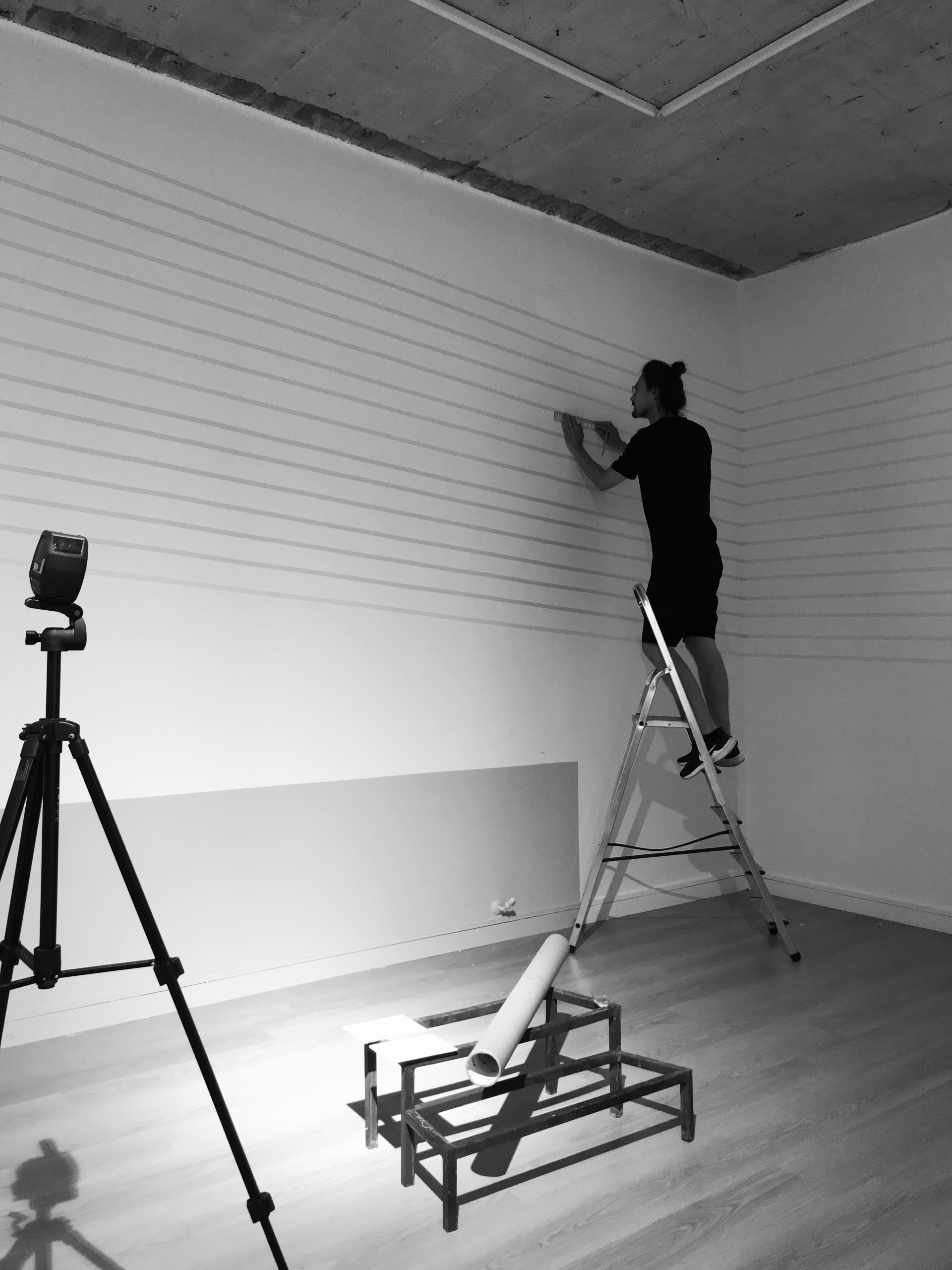
What would be the particularities of the Timișoara School? Can we talk about the Timișoara School? (How does it differ from Cluj, Iași, and Bucharest?)
This title in the form of “Schools from…” has a rather evasive tone and I have the feeling that it easily leads you in the wrong direction. If we were to talk about certain particularities of the academic structure in Timișoara in the field of arts, I could identify a certain affinity for interconnectivity between the existing sections, having the possibility as a student, regardless of specialization, to interact with the other fields. Of course, this approach leads to a certain openness to experiment, an aspect with serious roots in the history of the place. In this sense, we can recall the period of the 70s with the creative-artistic contribution of the Sigma Group manifested both in the field of visual arts and in the didactic register through the implementation of an alternative teaching system within the Fine Arts High School in Timișoara; another indication in the direction of the experiment is the performative art festival organized by the art historian Ileana Pintilie, called the Zona Festival, which started in 1993 and ran until 2002; The experimental music festival, under the umbrella of the Simultan Association, which continues to organize every year a series of events dedicated to this artistic sector; independent theaters that have an experimental attitude in their discourse, for example, the Basca Theatre, etc. In this generous series of actions and cultural-artistic situations, I could complete the list with the city’s appetite for the conversion of historical buildings and their coagulation into dedicated alternative spaces for visual arts through different artist-run spaces or other structural variants. So, in Timișoara, as I see it, there is a specific desire to explore and investigate certain mediums of visual expression, as well as possible new possibilities for interaction and dissemination of the cultural-artistic climate.
You are part of the artistic group Baraka Artist. What is the story of the group?
It all started in 2013, after 2012 when it was rumored that it would be the end of the world… This year marks ten years since we engaged in this collaboration, and thanks to the organically built path, without a well-defined initial plan, several periods can be highlighted, respectively: the starting period in which a friendship is born and a space dedicated to our activities is mobilized; the following period, which spans approximately five years, marks an experimental area, thus the Baraka Artist group was born, through which we had the opportunity to investigate even the limits of the personal ego, but also the perception of the public, launching certain questionable situations from an aesthetic and contextual point of view; in the third period an association is formed, called the Baraka Artist Cultural Association. Our association has in its worksheet the management of the Baraka Artist-run space which can be seen as an alternative visual art space, which stores workshop space, exhibition space, a place addressed to the residency, dialogue and debate area, a section addressed to the archive; but also a platform dedicated to the current needs of the artistic producer as well as the public to generate a direct and formative dialogue through research, exhibition and art promotion.
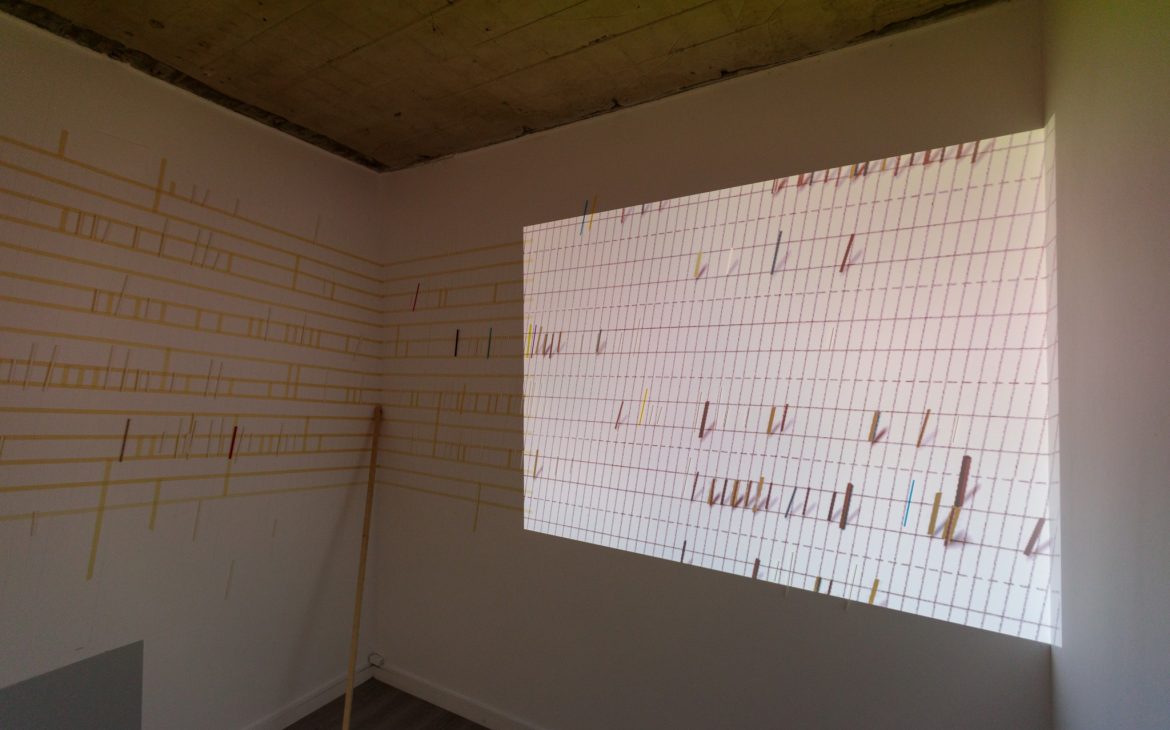
I recently saw your works at Art Encounters as part of the collective exhibition IF A STORY IS PRESENT, a project curated by Yane Calovski and Hristina Ivanoska. Please tell us more about your involvement in the project.
The IF A STORY IS PRESENT exhibition project was curated by Diana Marincu and organized by the Art Encounters Foundation team. At the same time, the project also included a mentoring program supported by Yane and Hristina addressed to a group of young artists, including myself. The collaboration started with a few online meetings where we discussed the practice of each of us and launched some proposals for our contribution to the exhibition space of the Art Encounters Foundation. In my case, I felt a special connection to certain points of research in the practice of the two Macedonian artists, especially regarding the development of the concept of the “Nine Principles of Open Form”, a theory initiated by the Polish architect Oskar Hansen. Another point of intersection consists in the affinity for the history and theory of art present in the way I work and the approach of the two artists, namely the way bridges are built between different areas of the artistic discourse, through the archive and memory, which are later included in the structure of the works. The work I made in this exhibition equation is called the Striking Network in the Open Field and it is composed of animation with a series of lines that are digitally drawn on a grid register, taken from the structure of special calligraphy notebooks, which expands on the surface of the walls in the form of an installation. Among other things, the work aims to investigate certain possibilities of communication between the digital environment and the objective reality.
At the beginning of the week, you presented a site-specific installation “Meeting Point In Suspended Fields” at the Fantom Gallery in Berlin, the result of your participation in an artistic residency program in Germany. What opportunities led you to join the project and how would you describe this international collaboration?
In March of this year, I came across an open call for a residency program organized by Anca Boeriu and Ludwig Norz at Fantom Gallery in Berlin. I wanted to take part in such an experience and applied without hesitation. The collaboration with Anca and Ludwig was special, and the residency program proved to be extremely fertile for me. In the first part, I needed a few days to sit in the empty space of the gallery to be able to penetrate the intimacy of the place, to understand the light, the architecture, and the other structural registers. The work, “Meeting Point In Suspended Fields”, is a site-specific installation that was consolidated by a series of bundles of lines drawn with pieces of adhesive tape attached directly to the gallery walls and each inscribed with a year from the last 2022 for years… 2022 lines resulted, and these segments varied in size and positioned with a certain angularity on the planes of the walls, in a location under the aegis of hazard, merged through an open and dynamic composition that transposed the geometric space with right angles in a chapel with a specific circularity. The installation stores a series of motifs that I have been working with for some time, including the motif of the line, the motif of the grid, the motif of the corner, the motif of the accident, etc., but also other intersections with the historical register of art, respectively with certain operating systems of situationism. Of course, in addition to the actual collaboration with the context of the residency, I had the opportunity to taste the pulse of Berlin both in terms of the plan of the art scene and the historical packaging of the place.

What was your biggest challenge as an artist in preparing for the two exhibitions?
Each of the two projects had certain particularities and even different contexts… in the case of the situation in Berlin with the Fantom Gallery, we had a special intimacy and a kind of autonomy in the management of the space, and in the context of the collective exhibition at the space of Art Encounters Foundations it was prioritized the construction of a symbiosis between several registers and mediums of expression to compose a unit relevant to the entire exhibition concept.
If I am not mistaken, one of the main themes you address in your works concerns the line motif. When did this topic become of interest and what made you want to explore it further?
I have been working with the line idea for a long time, but two years ago I started focusing more and more on this subject. The motif of the line became a priority in the context of a research that I started even within the faculty, on the occasion of the bachelor’s project, a work entitled, “Hyphen – Graphic Conversion”. The line came together with the grid motif and the idea of the conversion process that I structured conceptually. The stake of the project consisted in starting a conversion process of the line taken from the three-dimensional sculpture and reproduced in the two-dimensional version in a graphic-pictorial plan. Here, the concept of a round table in a metaphysical version also appeared in my discourse, in which several personalities took part, such as Paul Neagu, Agnes Martin, Andrei Cadere, John Cage, Horia Damian, Robert Ryman, and others. Through this generous framework, I built this line conversion mechanism that finally acquired a visual register in addition to the conceptual one. For me, the line has become a hyphen, even if it has a certain obliqueness, I use this notion in Paul Neagu’s terms, through which I can build an open, dynamic framework as a bridge between various situations and elements.
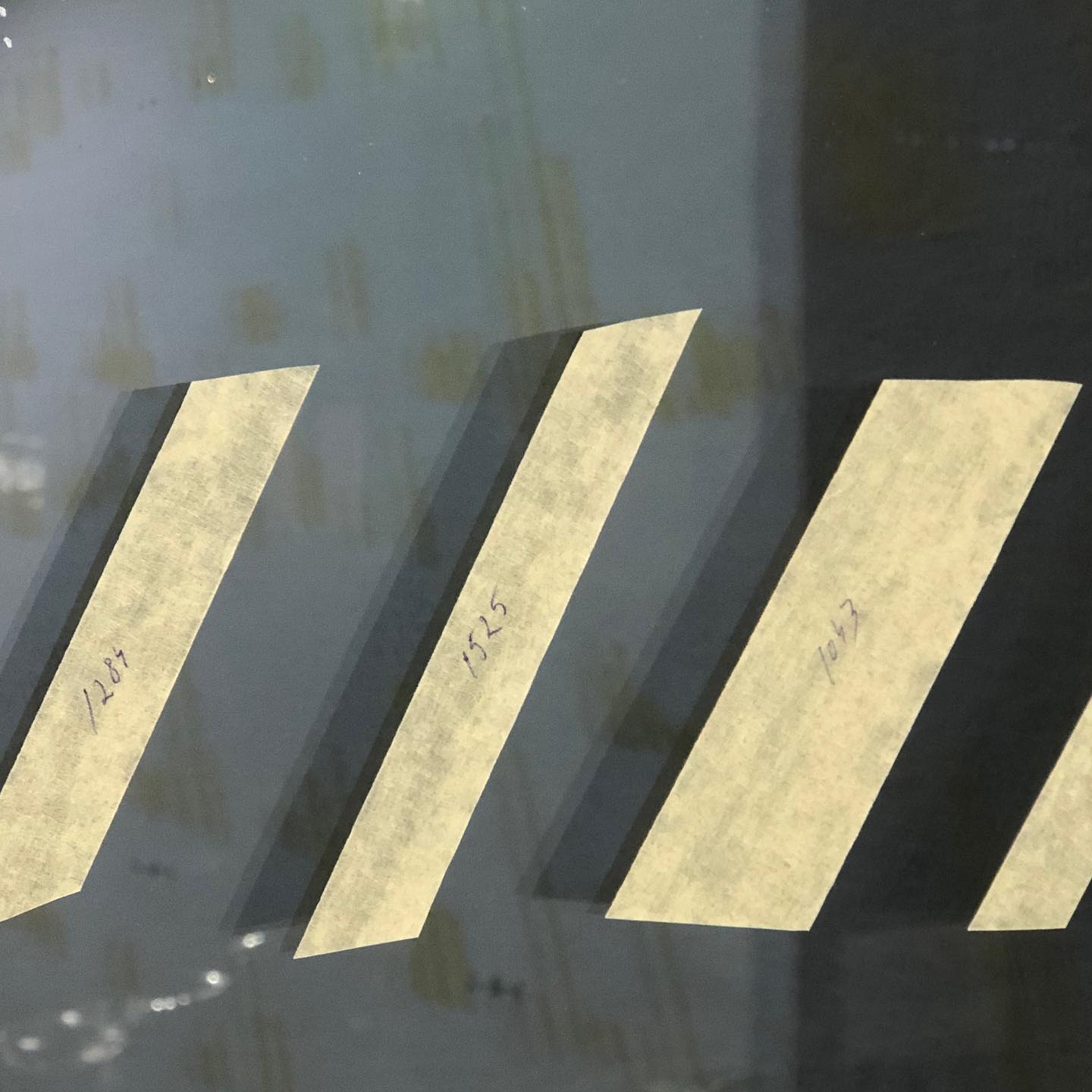
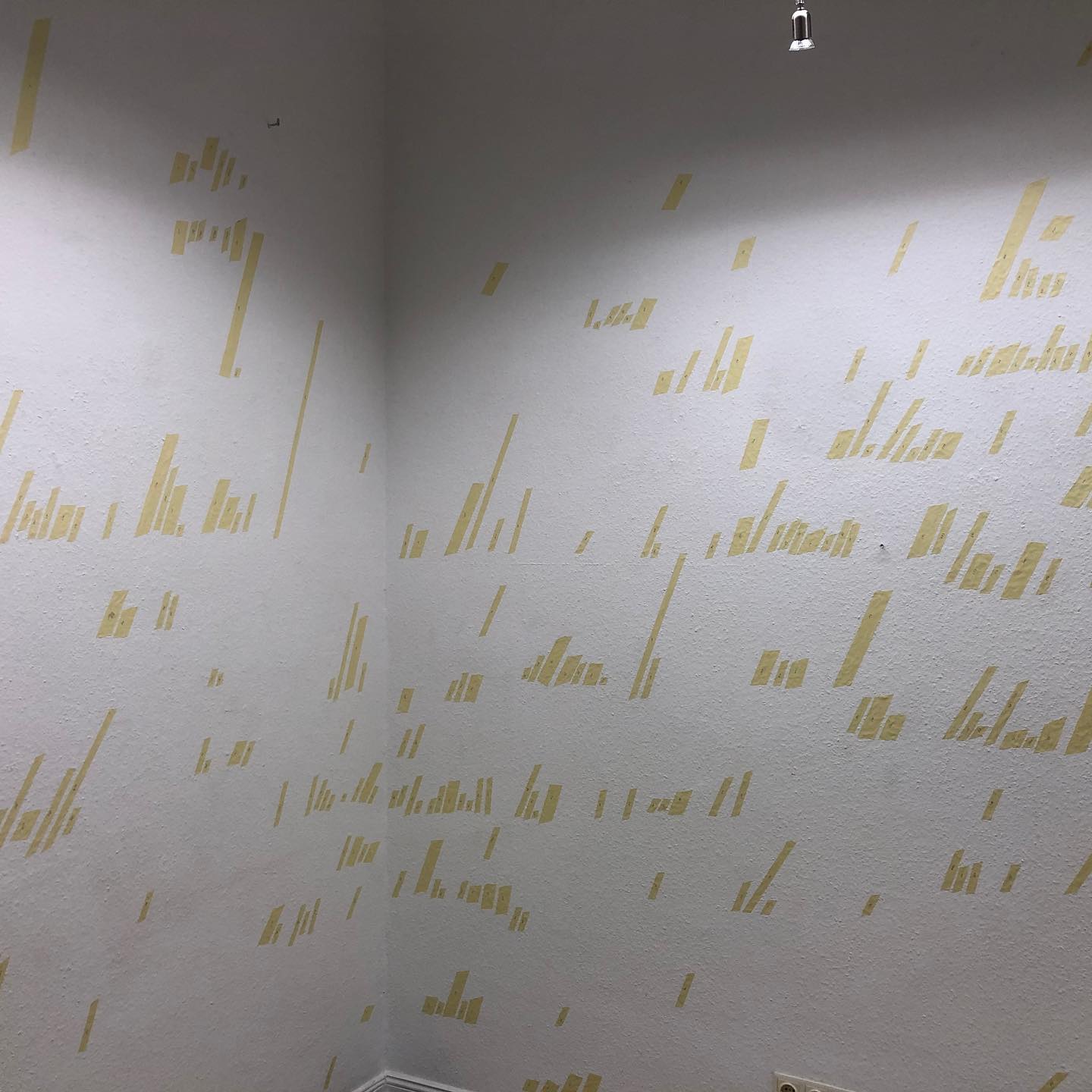
How important is it for you to convey a message through your art?
In this sense, I resonate a lot with what the American painter, Robert Ryman, said: “The entertainer entertains people… the artist does what he has to do, and the audience comes or doesn’t come… that’s all!”. So, from my perspective, the message reaches a zone of relaxation, even if it is a critical situation, the viewer becomes lazy in front of an artistic discourse with a too concrete message. I feel that the message creates a state of entertainment… This is not to say that I marginalize certain structures in the field of art, such as activist art or art with a certain ecological undertone, but for me the emphasis on the message is secondary.
What were the stages of your creative process, from the idea or source of inspiration to the new series of works?
The work process, in my case, also extends into everyday life… there are moments and everyday situations in which I hear something, observe a certain object or even have a certain feeling, which lead me to the state of realizing something… at that moment I take the notebook and write it down. This is how I end up consolidating various projects and works, through the intersection of different moments in my life. Of course, when I have a certain topic on which I am focused, I have the feeling that different conjunctures appear that “conspire” in directing my attention to that clue that I need for stacking a new brick to the structure of the construction of the proposed research. One more thing… the way I approach my practice has to do with an open operating system, in the sense of progressive research. I am not a follower of works with a concrete end in itself… I am not drawn to the finished object, I like to investigate how it is built, how, and why, it is the motivation and concern behind the visual that drives me and in the case of other artistic practices. I like that each intervention or object that I propose is part of the overall path of the actual research. I like to constantly learn new things from the surfaces I build, and every time I am surprised by different situations and elements I perceive. I am interested in finding solutions to the problems I have, namely the concern with the structure of the work and the visual experience.
How is Romanian contemporary art received on the international art scene?
I do not know if the way I see this situation has to do with my optimism, but I believe that Romania, through certain examples and specific periods in which different artists, groups, and even communities in the area of art stood out through work and seriousness beyond of the country’s borders, has the capacity, the resources, and the necessary tools, which only need to be activated by small impulses, to establish a certain verticality on the international art scene. At the moment, we have galleries that go to important art fairs, artists that share their studios between Romania and other countries, curators that manage global projects, young collectors with vision and devotion, alternative spaces, and new contexts of broadcasting of the visual arts… a true emerging artistic ecosystem.
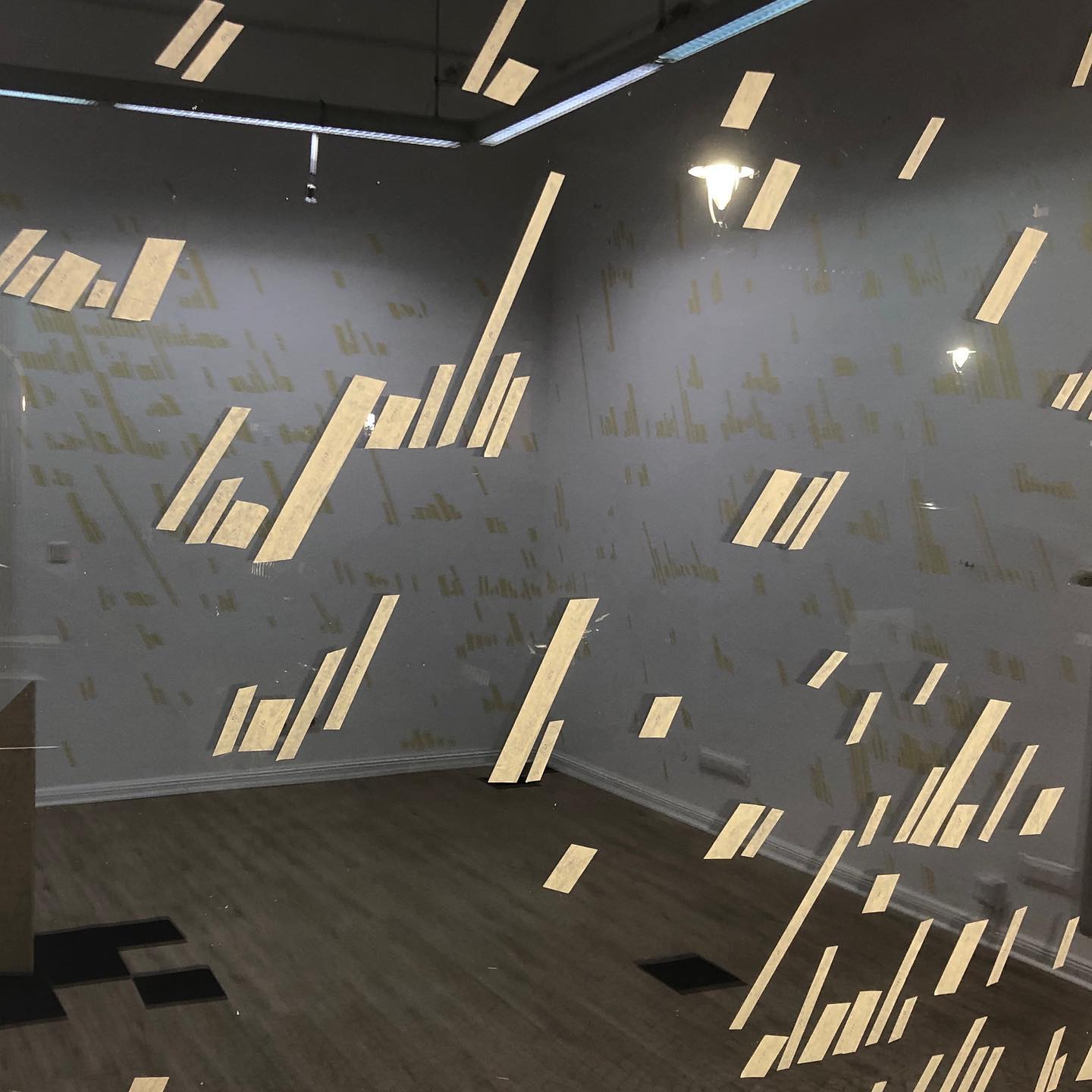
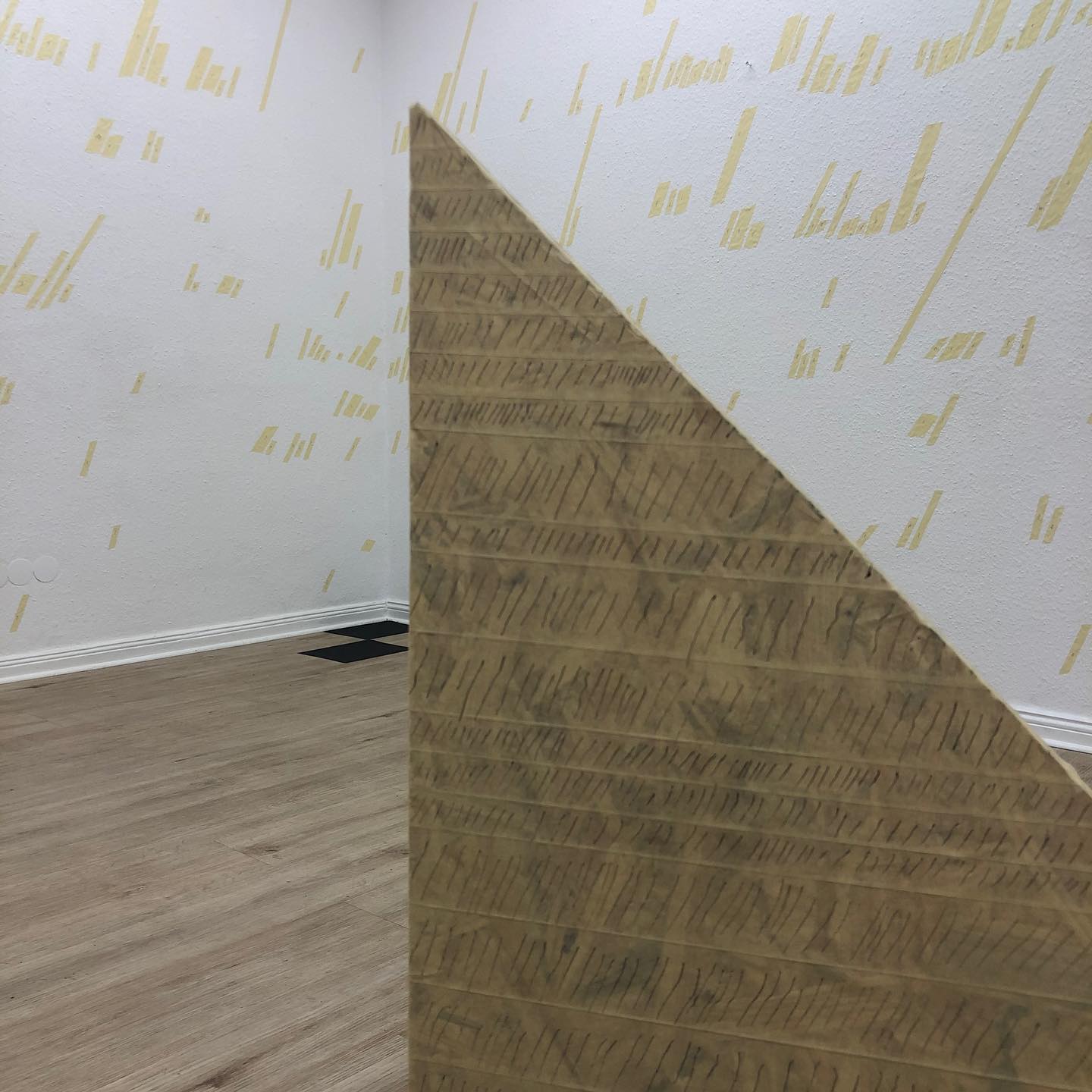
Who would you like to collaborate with? An international artist maybe?
In this sense, I do not necessarily have a concrete answer… I am an advocate of organic collaborations, without launching expectations and plans with certain fictitious projections. I would answer more quickly with whom I have had the chance and the opportunity to collaborate so far, it is the Art Encounters Foundation team with whom I worked for the first time in the context of the Art Encounters Biennale last year, on the organizational aspect… then I had the opportunity to meet an extremely professional, highly organized and particularly efficient framework in terms of cooperation between those involved in the foundation’s activity.
Is there something you would like to experience but the right context has not come along yet?
I would like to experiment further by building site-specific installations in which I discuss various situations and spaces with different structures, through which I generate an interactive environment where the viewer can have the opportunity to identify the main coordinates of my practice that can lead him, perhaps, in the direction of a true aesthetic experience.
What projects are you working on now and what are your plans?
I am currently working on a doctoral thesis, entitled “The Void-Between Transcendence and Representation”, and in parallel, I am organizing in the Baraka Artist-run space different workshops on different themes and topics related to contemporary artistic practices addressed to students and I continue to collaborate with different curators and exhibition organizers to take part in collective exhibition projects. In the future, I wish to expand my practice in various contexts, spaces, and situations relevant to the international art scene, to further build site-specific installations and various other interventions to share with both specialist and general audiences, and to maintain an open, homogeneous and fertile dialogue.
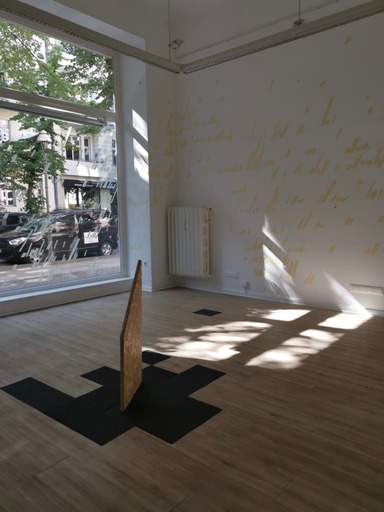
Meeting Point In Suspended Fields, Mihai Toth, Fantom Gallery, Berlin, 2022. Courtesy of the artist.

Meeting Point In Suspended Fields, Mihai Toth, Fantom Gallery, Berlin, 2022. Courtesy of the artist.
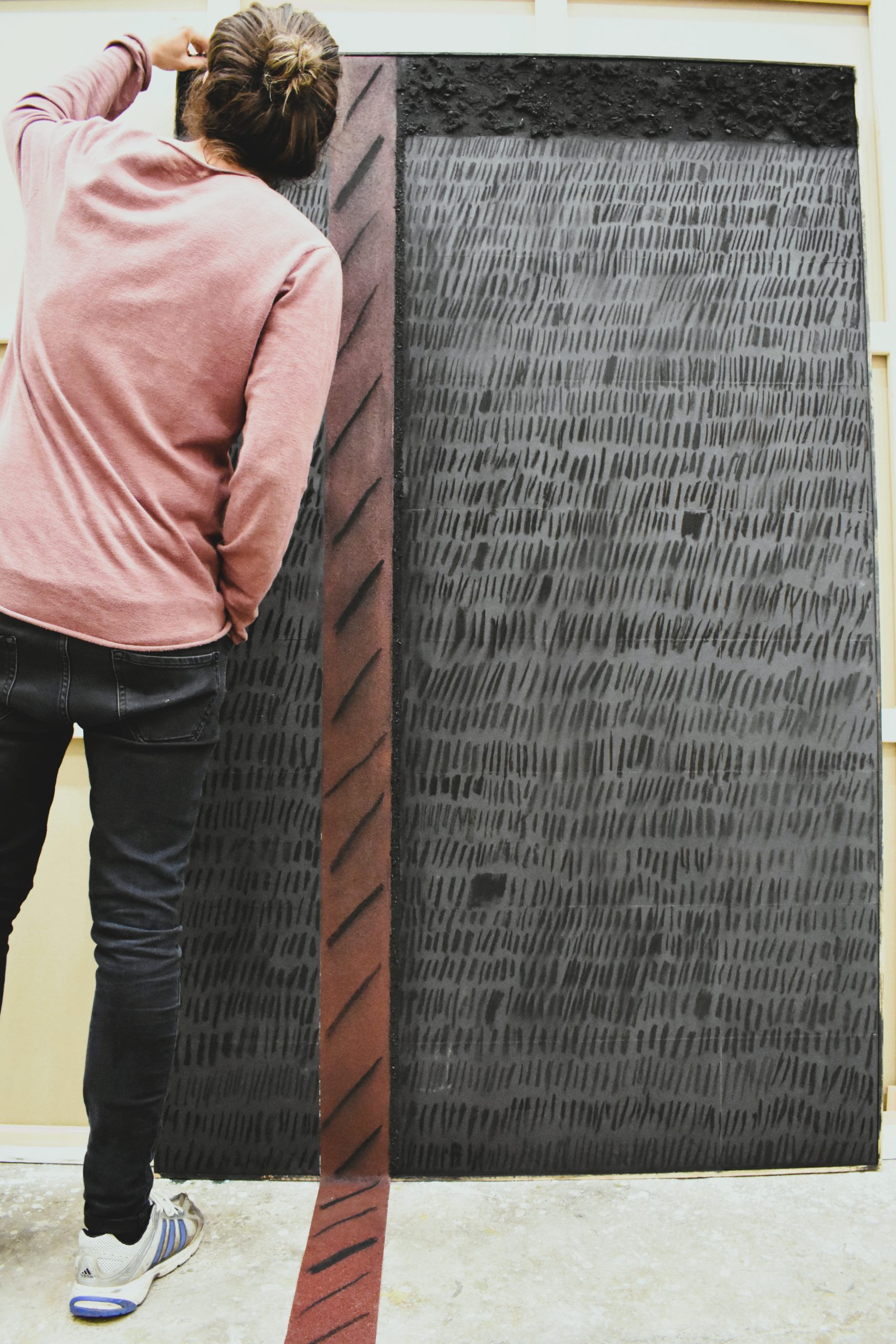
Studio session. Courtesy of the artist. Photo credit: Mirela Cerbu

Studio session. Courtesy of the artist.
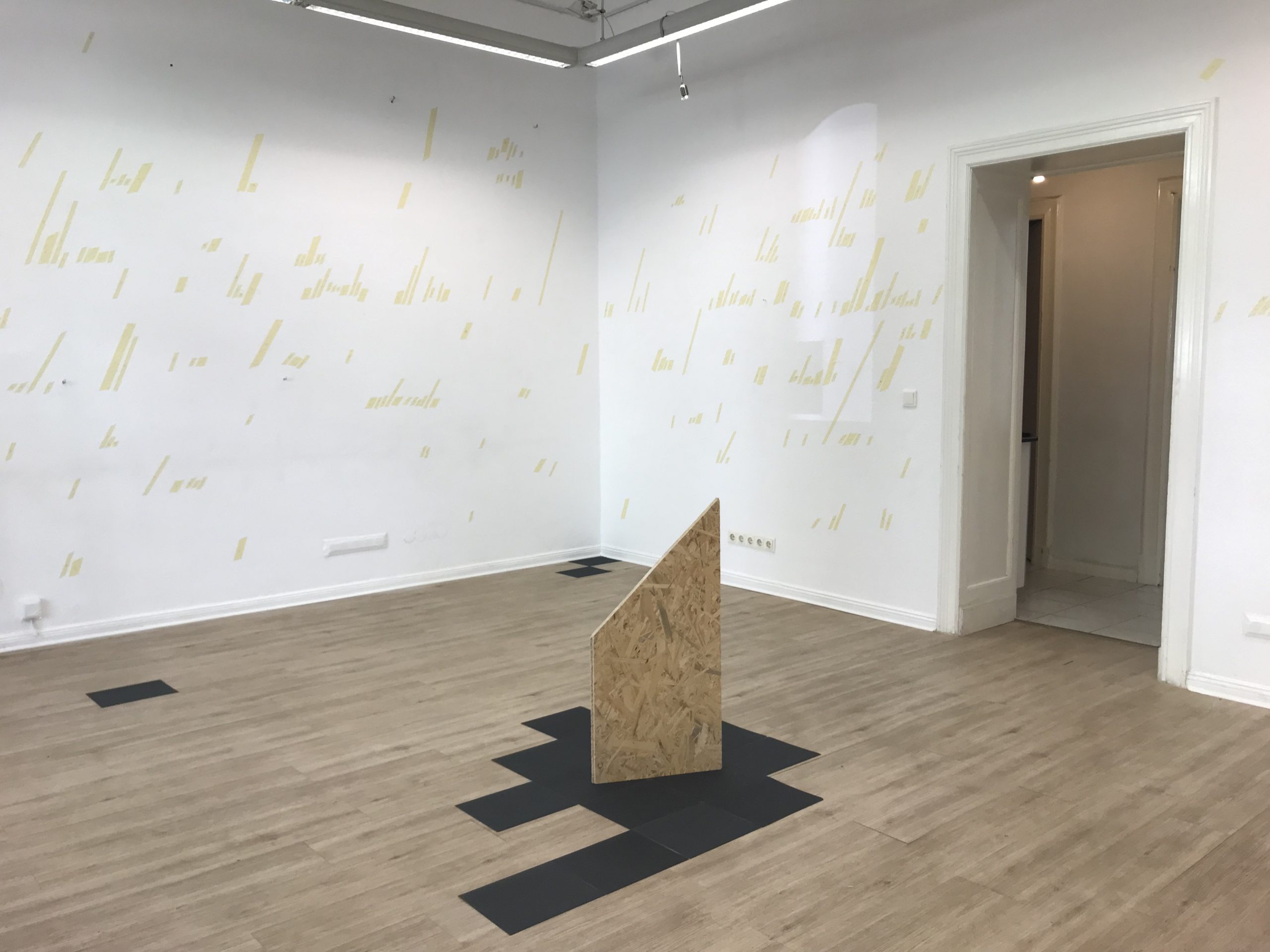
Meeting Point In Suspended Fields, Mihai Toth, Fantom Gallery, Berlin, 2022. Courtesy of the artist.
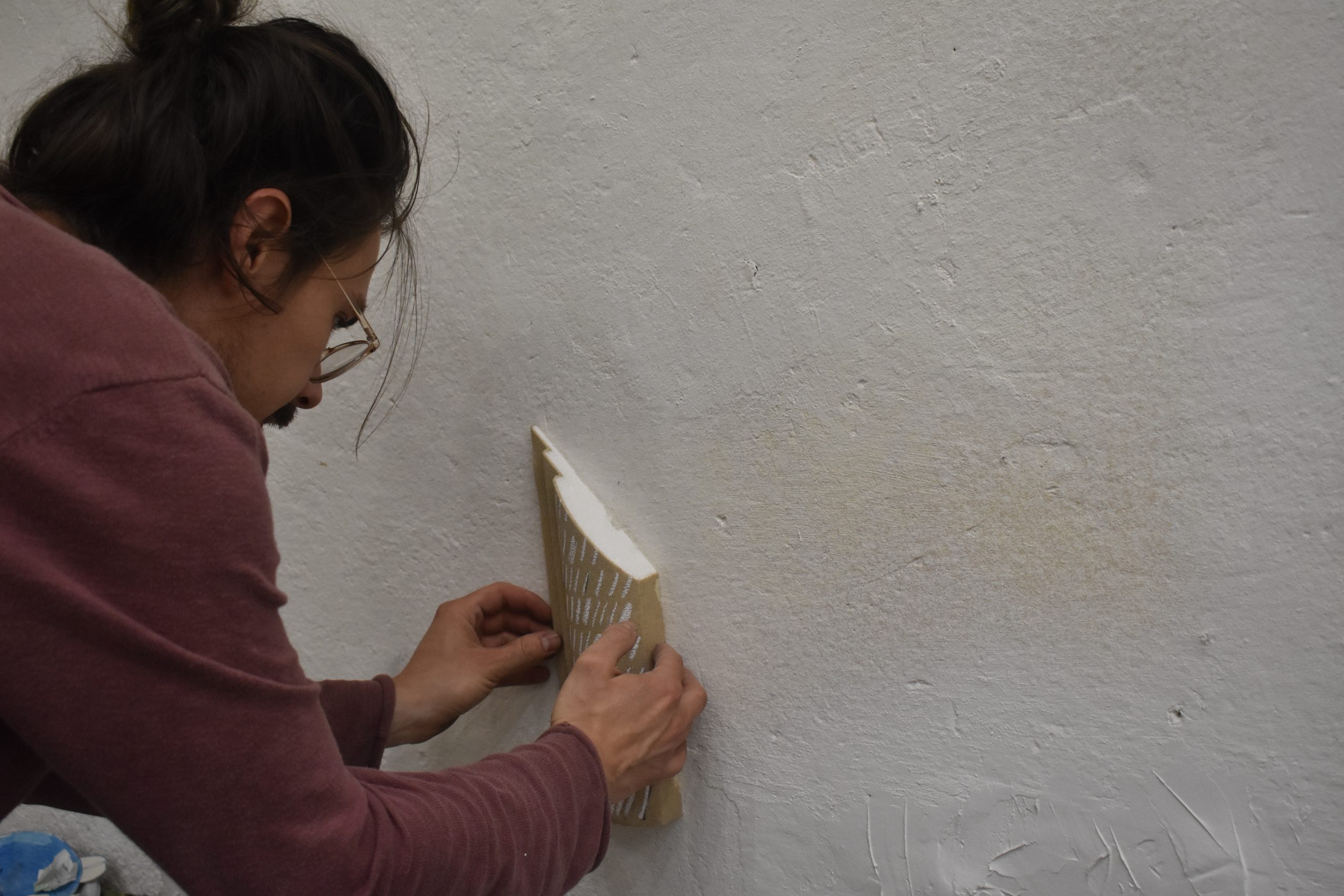
Studio session. Courtesy of the artist. Photo credit: Mirela Cerbu
Cover photo: Dana Dohotaru


